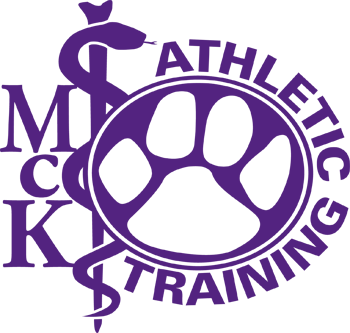Athletic Training - BS/MSAT 4+1 Option

The Direct Entry (4+1) Program is designed so students can complete both the Bachelor
of Science in Exercise Science and Sports Performance and the Master of Science in
Athletic Training degrees in a total of five years. These students are guaranteed admission into the MSAT program if they meet all prerequisites. Students entering through this route complete the graduate school application for
admission and technical standards form and are fully accepted into the MSAT program
after review of the GPA, credit hours and grades for prerequisite course work.
The second route of entry into McKendree's Master of Science in Athletic Training Program is through traditional graduate admissions. Students who have completed an undergraduate degree and all the prerequisite requirements apply for admission through the following link:
Master of Science in Athletic Training
Click here to view a sample degree plan.
The professional portion of the accelerated program encompasses the Master of Science
in Athletic Trianing requirements and consists of 53 credit hours that include the
latest research, knowledge, and techniques used by athletic trainers. Academic preparation
is guided by:
- NATA Executive Council for Education (ECE) oversees matters related to AT education.
The group facilitates quality professional and post-professional education, coordinates
the delivery of educational programming for the profession and maintains a dialogue
with its CAATE and BOC liaisons on accreditation and certification matters affecting
AT education.
- 8th Edition Pratice Analysis by the Board of Certification (BOC) that defines the entry-level knowledge, skills, and abilities required for practice in the profession of athletic training.
- Commission on Accreditation of Athletic Training Education (CAATE) curriculum standards.
- This program is designed to provide structured didactic and supervised clinical courseowrk to prepare students for entry-level position in athletic training. Didactic and clinical coursework are sequenced and integrated to maximize student learning. The purpose of the supervised clinical coursework is to provide a structured clinical experience to prepare for professional practice and engage in professional socialization. Throughout the academic program, clinical coursework provides direct patient care opportunities with varied client/patient populations for a variety of injuries, condition, and illnesses throughout the lifespan.
- Students pursuing McKendree's Direct Entry (4+1) Program enroll in the Bachelor of Science in Exercise Science and Sports Performance (ESSP+) Plus Program to complete their degree in Exercise Science and Sports Performance.
- Prerequisite coursework includes: Health and Wellness, Biology (with lab), Chemistry (no lab), General Physics (with lab), Anatomy and Physiology (2 semesters with lab), Medical Terminology, Nutrition, Kinesiology, Exercise Physiology, Psychology, Statistics and Principles of Athletic Training.
- Students who decide to opt out of the ESSP Plus program may still earn the Bachelor of Science in Exercise Science and Sports Performance degree by completing all remaining degree requirements listed under the ESSP Program.
Program Accreditation
McKendree University is fully accredited by the Commission on Accreditation of Athletic
Training Education (CAATE).
Program Highlights
- You’ll receive personalized attention from a teacher/student ratio for classroom courses
of one professor to every 12 students. In clinical settings, the maximum ratio for
clinical preceptor to student is 1:2; however, the ratio is frequently one-to-one.
- Athletic Training Faculty and Staff join together in providing didactic and clinical
instruction and supervision to all students.
- Every student spends 5 semesters involved in clinical rotations. These rotations involve extensive exposure with our team physicians. On campus clinical rotations provide exposure to a wide variety of intercollegiate activities including collision, contact and non-contact sports as well as team and individual sports.
- Clinical experiences can include: outpatient rehabilitation, sports medicine clinic, educational setting (high school, community college, college/university), occupational or industrial setting or physician’s office.
Websites
Commission on Accreditation of Athletic Training Education (CAATE)


